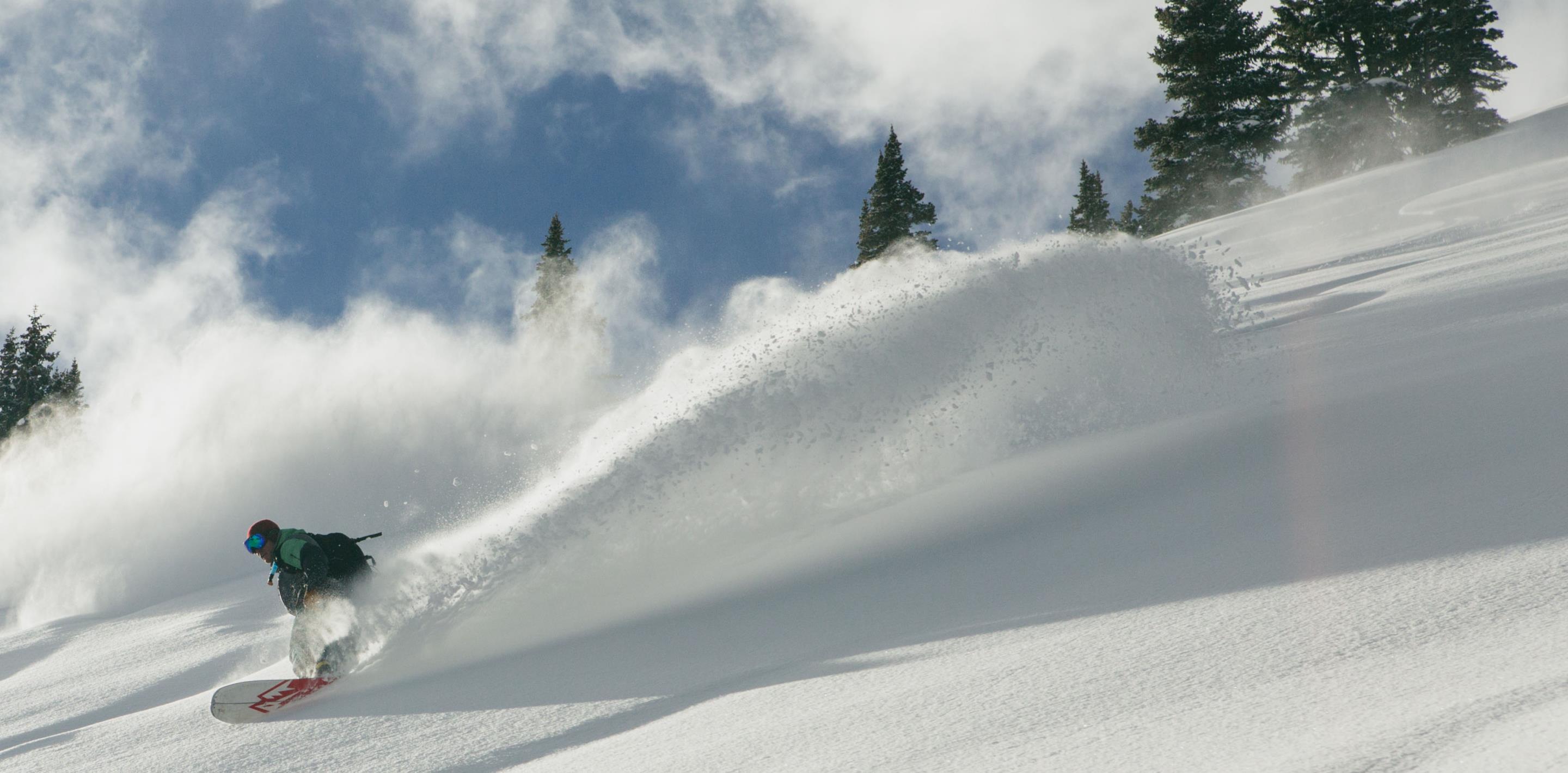These five spots have gladed runs and top-notch powder.
Anyone who’s dealt with long lines at the chair lift and carved-up, icy runs understands the appeal of a pristine backcountry slope. Thanks to the advent of splitboards—snowboards that split in half and double as two skis for hikes up the mountain—boarders can get the freshest first tracks.
“We’ve seen a big increase in the past two years,” says Jordie Karlinski, program manager for Leave the Boys Behind at Aspen Alpine Guides in Aspen, Colorado. “As more companies are producing splitboard gear, the technology is advancing and becoming lighter and easier to use, and more local shops have rentals.
Compared to ski touring, or skinning, splitboarding up a mountain is more work; you need to physically transform your gear, for starters, and a boarder’s bindings and boots aren’t made for climbs. “A ski boot is hard, which helps you side-hill more easily compared to a soft snowboard boot,” says Brendan Burns, an AMGA-certified ski and splitboard guide and lead guide for Exum Mountain Guides near Jackson, Wyoming, which offers a three-day splitboard mountaineering clinic.
“When people first try it, they’re pretty worn out because all that ascending uses muscles they’re not accustomed to using,” he adds. "But on the flip side, coasting back down through untouched powder is a great feeling." It also feels a bit different from regular snowboarding. “You lose some rigidity [in the board] and there’s some torsion since you've cut it in half,” he explains. “But I’ve ridden mine in pretty hairy, hard, icy terrain, and it performs really well. The manufacturers are doing an amazing job making them ride pretty close to a regular board’s setup.”
How to train:
“General fatigue is one of the biggest issues,” Burns says, so start building up your endurance with high-intensity interval training a few weeks or months ahead of your trip. Then focus on strengthening the leg muscles you’ll need to haul yourself uphill. “Hip flexors tend to burn because of the weight attached to each foot,” he warns. Lunges and squats are a good start, while box steps or the StairMaster work the glutes and core and simulate the boot packing motion that’ll get you up the mountain.
Where to try it:
As a general rule, splitboarders can make the uphill march everywhere ski touring is allowed, and dozens of US resorts have uphill policies now. Some have special hours for skinning, others limit it to certain routes, and a few ban it during regular season.
If you’re going the backcountry route, consider hiring a guide. “We plan routes that come up and go straight down, without a bunch of traversing or unnecessary transitions from split mode to downhill mode,” Burns says. Here, five spots to check out this season.
Photo: Carl Zoch
